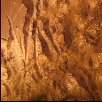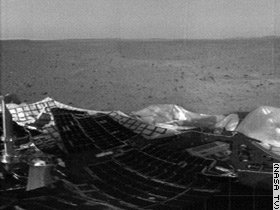
© NASA
S198 Exploring Mars
Starts 15th November 2003
OU S198 Course Description

ESA Mars Express
The OU and Mars
NASA Mission to Mars
JG's S198 links
Cornell University Mars Exploration Rovers
Animations of Mars
Beagle 2 Mailing List
Jodrell Bank
Malin Space Science Systems - Images
Weather Forecasts
USGA Mars Nomenclature
Particle Physics and Astronomy Research
British National Space Centre
The Planetary Society
The Mars Society
Project Orion
BBCi
Nine Planets Mars
Imagine Mars
Back to OU
The Open University Home Page
OU Student Home Page

22nd January
NASA's Spirit has been examining rocks and has found olivine, of all things! Beagle still appears to be lost, but Mars Express has been taking some amazing photos, like this one of the Valles Marineris. (Click to go to large picture on ESA website - well worth it!)
4th January
Copyright: ESA/DLR/FU Berlin (G. Neukum)
HOORAY!! NASA's Spirit landed successfully on Mars in the early hours of this morning and is already beaming back pictures! Will be following happenings with great interest - and also keeping everything crossed that we might hear signs from Beagle from the Mars Express on Wednesday.
26th December
Worryingly and disappointingly, no signal was heard from Jodrell Bank last night - nor did NASA's Odyssey craft pick up any sign of Beagle, in the early hours of Christmas morning. Odyssey will try again this evening - but, perhaps our best hopes may rest with Mars Express, which is due to pass over the believed landing spot on January 4th. At least we know that the electronics are compatible with Beagle - whereas we don't know that with regards to the NASA craft.
26th October
After much deliberation (because I couldn't afford it!), I registered for this course last night! It really is a MUST, what with Beagle landing (we hope) on Christmas Day and all the NASA stuff! Anyway, I'm very excited - should be great!
Diary is on here
Important dates and times for Beagle 2 (courtesy of Beagle 2 website)
16th Dec 2003 All day Fine targeting of Mars Express to point at the landing site 19th Dec 06:51 GMT Decision to release Beagle 2 19th Dec 08:11 GMT Eject command sent to Mars Express 19th Dec 10:15 GMT First results of release available 20th Dec All day Retargeting of Mars Express on an orbital insertion course 23rd Dec T.B.D. Update on Mars Express orbital insertion sequence 24th Dec Night Final decision to steer Mars Express into a Martian orbit 25th Dec 02:54 GMT Beagle 2 lands on Mars 25th Dec 03:00 GMT Mars Express orbital insertion 25th Dec 05:15 GMT Mars Odyssey orbiter flies over Beagle 2 - first possible signal retrieval from the lander 25th Dec 07:00 GMT First evaluation of Mars Express orbital insertion 25th Dec 22:45 GMT Possible direct capture of Beagle 2 signals at Jodrell Bank Observatory (UK) 25th Dec 03:00 GMT Mars Express orbital insertion 25th Dec 05:30 GMT Mars Odyssey orbiter flies over Beagle 2 - first possible signal retrieval from the lander 25th Dec 06:30-07:00 GMT Mars Odyssey contacts NASA's Jet Propulsion Lab, first possible signal from Beagle 2 received on Earth 25th Dec 07:00 GMT First evaluation of Mars Express orbital insertion 25th Dec 07:15 GMT Sunset on Mars (sol1 18:35 local solar time) 25th Dec 20:02 GMT Sunrise on Mars (sol2 07:02 local solar time) 25th Dec 22:45 GMT Possible direct capture of Beagle 2 signals at Jodrell Bank Observatory (UK) 26th Dec 07:55 GMT Sunset on Mars (sol2 18:36 local solar time) 26th Dec 17:33:49 -18:53:49 GMT Possible signal retrieval from the lander via Odyssey (sol3 03:49 local solar time)
There will be a delay of at least an hour to return any Odyssey signal to Earth and process.26th Dec 23:00:00 - 00:20:00 GMT Possible signal retrieval from the lander at Jodrell Bank Observatory (UK) (sol3 09:07 local solar time)
Jodrell Bank will start to look much earlier than the times stated.27th Dec 06:17:46 - 07:37:46 GMT Possible signal retrieval from the lander via Odyssey (sol3 16:13 local solar time) 27th Dec 22:56:00 - 00:16:00 GMT Possible signal retrieval from the lander at Jodrell Bank Observatory (UK) and the Stanford University telescope (California, US) (sol4 09:24 local solar time) 28th Dec 18:57:16 - 20:17:16 GMT Possible signal retrieval from the lander via Odyssey (sol5 03:53 local solar time) 29th Dec 07:41:13 - 09:01:13 GMT Possible signal retrieval from the lander via Odyssey (sol5 16:17 local solar time) 30th Dec 07:24:11 - 08:44:11 GMT Possible signal retrieval from the lander via Odyssey (sol6 15:21 local solar time) 30th Dec 20:20:42 - 21:40:42 GMT Possible signal retrieval from the lander via Odyssey (sol7 03:57 local solar time) 31st Dec 09:04:39 - 10:24:39 GMT Possible signal retrieval from the lander via Odyssey (sol7 16:21 local solar time) 4th Jan 2004 T.B.D. Earliest signal retrieval from the lander via Mars Express 6th Jan 11:00:00 - 12:20:00 GMT Possible signal retrieval from the lander via Mars Express (sol13 14:22 local solar time)
These Mars Express times are pre-programmed.12th Jan 03:10:00 - 04:30:00 GMT Possible signal retrieval from the lander via Mars Express (sol19 02:53 local solar time) 13th Jan 15:18:11 - 16:38:11 GMT Possible signal retrieval from the lander via Mars Express (sol20 14:03 local solar time) 17th Jan 17:50:00 - 19:10:00 GMT Possible signal retrieval from the lander via Mars Express (sol24 13:57 local solar time)
Is there life on Mars? Did life exist there in the past? These are the questions that regularly put the red planet in the headlines. This course will look at the questions that the Beagle 2 lander and other missions to Mars hope to address. It will enable you to explain why this is the most likely planet in our Solar System, other than Earth, where life may have existed or continues to exist, and will show you how space missions hope to search for evidence of that life. This course will also develop your understanding of the geology of Mars, its atmosphere and environments where life may once have existed or, perhaps, continue to exist.
If you are new to scientific study, you will find that the course book Understanding Mars introduces scientific ideas as you need them, progressively developing more sophisticated concepts and skills. If you have a keen interest in space exploration, or have read popular books, newspaper or magazine articles about Beagle 2 and other Mars missions, you will find that the course develops your understanding and provides you with new insights into the history of Mars exploration and introduces areas of the scientific study of Mars that you have not met before.

